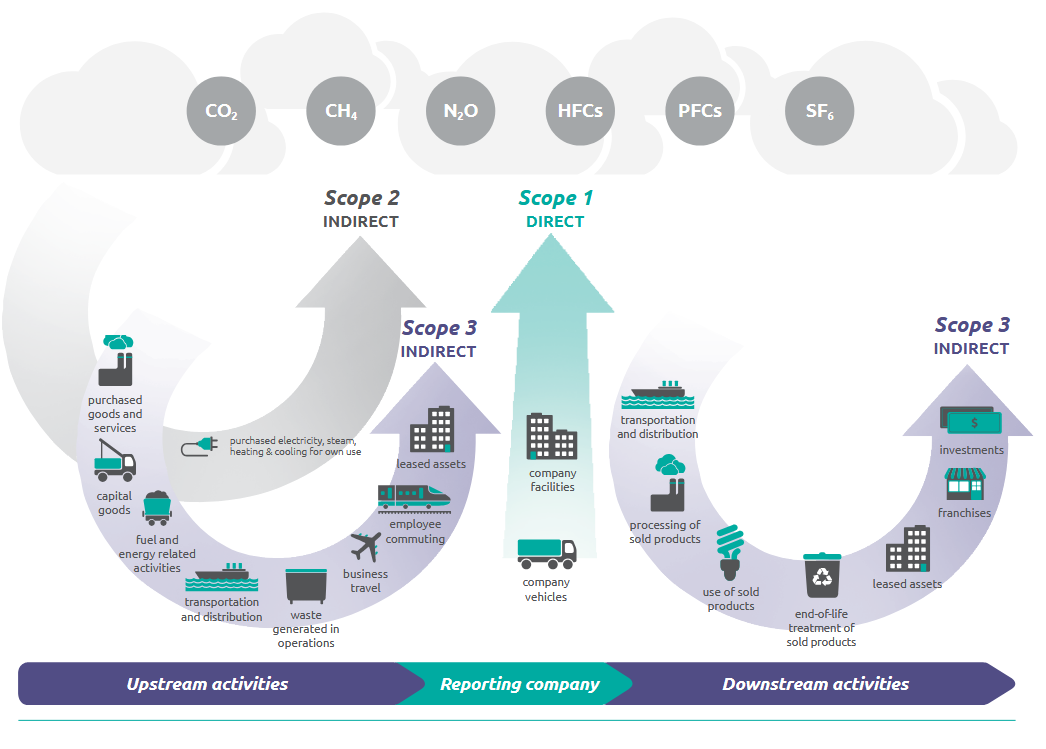What it means
Supply‑chain engagement can be described as a systematic process by which a buying organisation or company actively collaborates with its network of suppliers to achieve shared business goals. These are most commonly cost reduction, quality improvement, risk mitigation, innovation, and sustainability. In our case the focus of this article lies on the engagement of suppliers towards decarbonization.
Why it matters

The year 2024 was the warmest year in global temperature records since the start of records in 1850. This closed a decade where each of its years was the warmest year ever recorded. Additionally, looking at the Paris Agreement, 2024 was the first year that exceeded the 1,5°C above pre-industrial levels. One of the main drivers of this development are the emissions of greenhouse gases like CO2 into the atmosphere.
According to CDP, the indirect emissions (e.g. by material purchasing, transportation or end-of-life treatment) caused by the supply chain of worldwide enterprises are 11.4 times higher than their direct emissions from operations (e.g. by fuels for vehicles or used in production). This shows the importance of engaging with suppliers to actively reduce emissions, prevent further global warming and with that, secure a liveable planet for future generations.
Where to start
A company’s first step towards a supply chain engagement strategy should always be the calculation of its own emission balance. The Corporate Carbon Footprint (CCF)shows the current status of direct and indirect emissions released into the atmosphere and serves as the base for all future climate actions of your enterprise. Companies should calculate a complete emission balance over all three scopes defined by the Greenhouse Gas Protocol, which can be seen in the figure below.

Determining the emission hotspots of the total CCF can show the biggest emission drivers of an enterprise. This can be smoothly done with a pareto top down approach to reduce effort and increase efficiency e.g. via the DFGE TopDown approach. With the newly gained information on emission hotspots, typically found in the scope categories 3.1 (purchased goods & services), 3.2 (capital goods) and 3.4/3.9 (upstream/downstream transportation), the company can now focus on diving deeper into clustering the share different suppliers are having at their Corporate Carbon Footprint.
Given the needed internal buy-in of e.g. the company’s procurement and sustainability team the focus can now be shifted to developing a strategy on engaging with the most relevant suppliers and implementing decarbonization levers within the enterprise’s supply chain. Depending on the current supplier’s maturity level on climate action, these can vary tremendously. Naming only a few possible options, companies could advise the most impactful suppliers to participate in:
- Increasing their knowledge about sustainability and decarbonization
- Calculating their own CCF as a baseline
- Providing Product Carbon Footprints (PCF) of their sold products to improve emission data quality
- Setting Science-Based Targets (SBT) to commit to emission reductions
- Disclosing to sustainability ratings like e.g. CDP or EcoVadis to enhance credibility
- Discussing product design and circularity as important options to emission reductions
Continue the journey
Supply chain engagement is, more than ever, one of the most important milestones of a credible Scope 3 reduction strategy. It can increase cost efficiency, improve risk mitigation and provide long-term competitive advantages.
If you want to make an impact by moving from a simple buyer-seller transaction to a collaborative, data-driven partnership and implement a holistic supplier engagement strategy, then get in contact with us via mail () or phone (+49 819 29973320).
Join the rising number of companies that are turning climate ambition into bottom‑line growth. With DFGE as your partner, your supply chain will no longer be a carbon liability-it will be a stimulus for your enterprise’s innovation, resilience and brand trust.
Sources:
https://files.sciencebasedtargets.org/production/files/Supplier-Engagement-Guidance.pdf
https://ghgprotocol.org/sites/default/files/2022-12/Supplier%20Engagement%20Guidance.pdf
https://climate.copernicus.eu/copernicus-2024-first-year-exceed-15degc-above-pre-industrial-level









